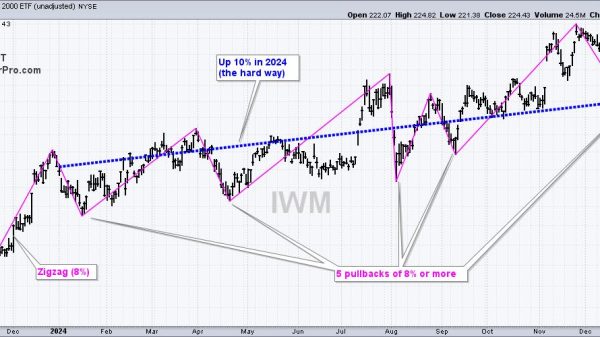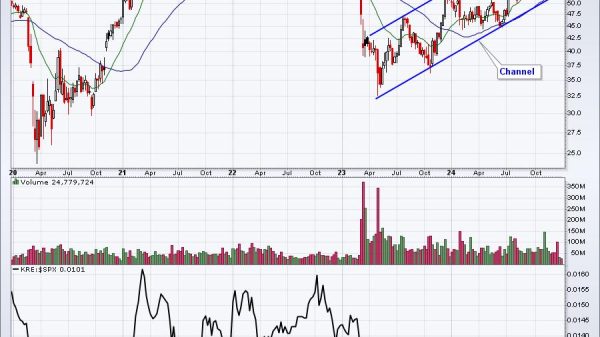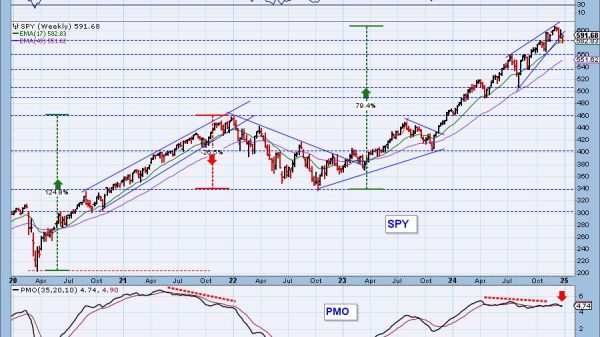Colin Grabow
It has become conventional wisdom among many in Washington that a once‐vaunted US manufacturing sector has become a shell of its former self. Language used by members of the commentariat and politicians to describe the state of US industry is often bleak, sometimes bordering on the apocalyptic. In August, for example, columnist David Brooks flatly stated “we don’t make things anymore.” Talk of rescuing the so‐called “Rust Belt” and American manufacturing have been staples of recent presidential campaigns, and once in office President Biden and President Trump have both pushed a spate of protectionist measures to resuscitate the allegedly beleaguered sector.
But aside from the economic harm inflicted by such actions, the underlying premise that American manufacturing needs saving doesn’t square with the facts. As I explain in a new essay, reports of the sector’s demise are greatly exaggerated—if not entirely fictitious.
Simply put, the United States remains a manufacturing powerhouse. In 2020 it was the world’s fourth‐largest steel producer and in 2021 was the second‐largest automaker and largest aerospace exporter. Accounting for nearly 16 percent of global manufacturing output in 2021—second only to China, which has four times the population of the United States—the US had a greater share than Japan, Germany, and South Korea combined. By itself, the US manufacturing sector would constitute the world’s eighth‐largest economy.
Such facts perhaps come as a surprise to Americans accustomed to regularly purchasing consumer products that are made overseas. If the United States is such a manufacturing stronghold, they might reasonably wonder, where is all the stuff that American firms make? The answer: all around us. US manufacturers make many of the products we use, ranging from the gasoline in our cars (not to mention the cars themselves) to the sophisticated medical instruments in our hospitals to the advanced commercial aircraft that transport us to destinations around the globe.
Even many of the products Americans consume from overseas still have a considerable US influence. Nike shoes, for example, are produced abroad while design work takes place at its headquarters in Oregon. Similarly, numerous designers are employed by Apple in the United States as a key part of the production process for devices sold worldwide. Such highly skilled work may not take place on the assembly line, but manufacturing would be impossible without it.
Beyond our everyday shopping experiences, perceptions of US manufacturing decline may also be due to the declining number of Americans who work in factories. From a peak of 19.5 million workers in 1979—22 percent of the nonfarm workforce—manufacturing employment has dropped to approximately 13 million today and just 8.3 percent of nonfarm workers. But employment is not the same as output—far from it. While manufacturing employment has declined by about one‐third, output is only slightly off its record high. Manufacturing’s value‐added, meanwhile, last year stood at an all‐time high.
This ability to produce more stuff with fewer workers reflects the incredible productivity of US workers. Measuring manufacturing value added on a per‐worker basis shows Americans to be the world leader at over $141,000. That’s 45 percent higher than second‐place South Korea and over seven times that of workers in China. Such high productivity helps explain why manufacturing attracted over $55 billion in foreign direct investment last year—more than any other sector.
Along with higher productivity, reduced manufacturing employment reflects Americans’ increased appetite for services over stuff. Instead of buying proportionately more manufactured products as they become more prosperous, Americans are spending their money on services and experiences such as dining out, travel, and entertainment.
This is hardly a uniquely American phenomenon. Across a range of highly developed countries the same pattern holds, with countries seeing less manufacturing employment as they become richer. Germany, a country long synonymous with manufacturing prowess, has seen its share of workers employed in the sector nearly halved from approximately 37 percent in 1973 to barely 19 percent as of 2016. Japan, another long‐time manufacturing titan, had just 16 percent of its workers employed in manufacturing as of 2016.
It’s not clear that this should be a source of distress given the relatively low wages of such employment. As a 2018 Congressional Research Service report points out, “…production and nonsupervisory workers in manufacturing, on average, earn significantly less per hour than nonsupervisory workers in industries that do not employ large numbers of teenagers, that have average workweeks of similar length, and that have similar levels of worker education.” Other sources comport with this finding, as I note in my new essay:
A senior economist at the Federal Reserve Bank of St. Louis pointed out that, while the average manufacturing worker earned $0.50 more per hour than the average private‐sector worker in 2010, by 2022 the average manufacturing worker was earning $1.12 less. This finding comports with a 2019 Bureau of Labor Statistics report noting that in 1990, production workers in manufacturing had hourly earnings approximately 6 percent greater than those of production or nonsupervisory workers in the total private sector ($10.78 versus $10.20) but that by 2018, such workers were earning about 5 percent less ($21.54 versus $22.71). In addition, a 2022 paper found that the wage premium for manufacturing jobs has disappeared and noted that manufacturing wages rank in the bottom half of all jobs in the United States.
Of course, none of this is to suggest that manufacturing employment is somehow bad or that the sector should be looked down on, but those calling for a manufacturing renaissance and to put more Americans to work in factories should perhaps first take a deep breath.
This is also not to say that the state of manufacturing cannot be improved. While there is certainly no reason for doom‐mongering, plenty of scope exists for eliminating obstacles that hinder the sector’s growth and competitiveness. Removing tariffs on steel and aluminum, for example, would boost the fortunes of manufacturers that rely on these metals as key inputs, while scrapping Jones Act shipping protectionism would bolster the US steel industry (among others). Changes to the tax code that allow for full, immediate expensing of capital investment and a more sensible, streamlined immigration system would benefit both manufacturers and a range of other industries.
But perhaps the best assistance legislators can offer is to back off and resist temptations to engage in new misadventures in protectionism or industrial policy.
Contrary to common perception, US manufacturing continues to be a vibrant source of growth and economic dynamism. Provided Washington can avoid ill‐advised schemes to “rescue” the industry it should remain so for many years to come.
























